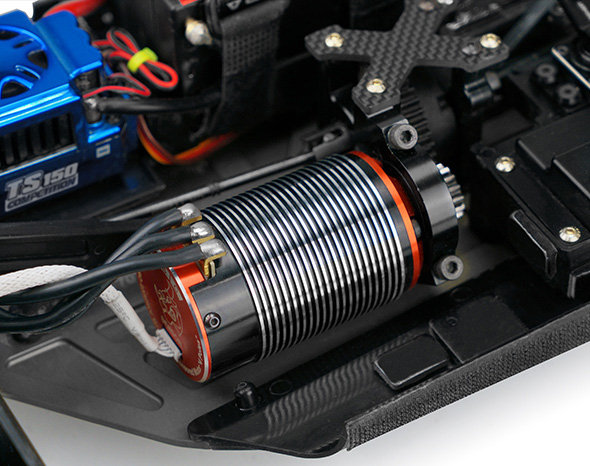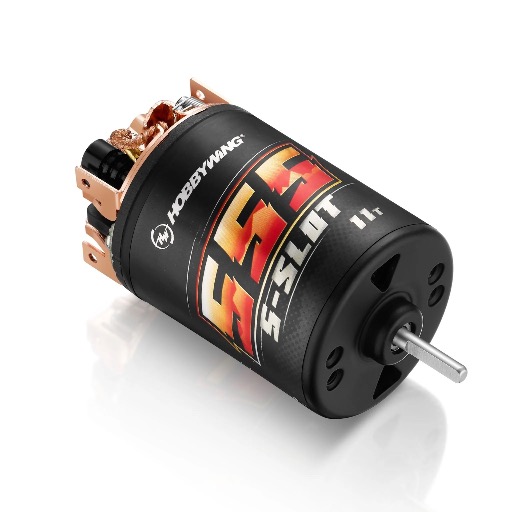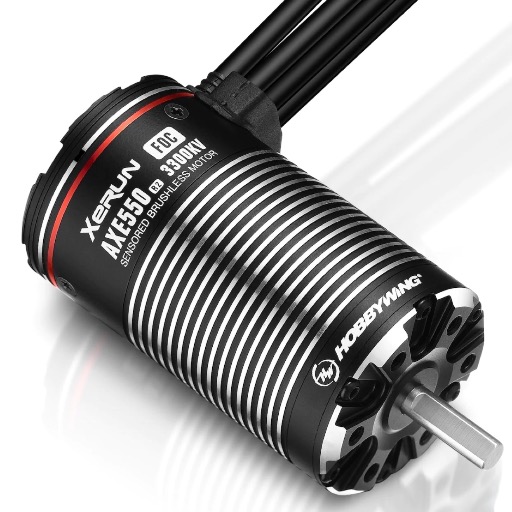Let’s learn a couple of things about electric motors, the heart and soul of your radio-controlled (RC) vehicles. In this post, we'll journey through the essence of electric motors, the variety they offer, the marvels of modern technology, and how to decode those cryptic motor specs. Let's rev up our knowledge!

Defining the Heartbeat of RC
Electric motors are the dynamic driving force of your RC machine. They are responsible for converting electrical energy from the battery into mechanical power, making your RC vehicle zoom, spin, and dash across terrains. This is where the action begins!
These little powerhouses have come a long way. In the early days, brushed motors dominated the scene. They are efficient but have brushes that need regular maintenance.
Then, along came brushless motors. These technological marvels have brought efficiency, durability, and less maintenance into the spotlight. With brushless motors, RC enthusiasts can enjoy smoother and more powerful rides. It is a game-changer that has elevated the RC experience to new heights.
The RC Motor Show
There are a variety of motor types used in the RC hobby:
- Brushed Motors: Traditional and reliable, these motors have brushes that transfer electrical power from the batteries, to the rotor, creating motion. They are a great starting point for beginners but may require more maintenance.
- Brushless Motors: The superstar of modern RC, brushless motors are known for their smooth operation, higher power output, improved efficiency, longer lifespan, and less maintenance compared to brushed motors. These features make them the motor of choice for many RC enthusiasts who seek top-notch performance and reliability in their vehicles and aircraft.
- Sensored and Sensorless Motors: These are variations of brushless motors. Sensored motors incorporate physical sensors to provide real-time feedback to the electronic speed control (ESC) on the rotor's position and speed. This precise feedback allows for highly accurate control, making sensored motors ideal for applications where precise positioning and speed control are critical, such as racing. Sensorless motors, on the other hand, rely on advanced control algorithms to estimate the rotor's position and speed based on the voltage and current waveforms. While sensorless systems can be more cost-effective and have fewer components that can wear out over time, they may not offer the same level of precision and control as sensored motors.
- Coreless Motors: These tiny wonders are found in micro RCs. Instead of using a traditional iron core, coreless motors have a winding made of a coil of wire wrapped around a lightweight, hollow, and cylindrical armature. This design results in a motor with a lightweight rotor, low inertia, and high power-to-weight ratio.

Modern RC motors are a marvel of technology. Here's what you can expect if you are not picky and just need a motor for your RC:
- Efficiency: Today's motors are highly efficient, offering more power with less energy consumption. This means longer run times and less stress on your battery.
- Durability: Thanks to advanced materials and engineering, modern motors are built to last. They can withstand the rigors of off-road adventures and high-speed runs.
- Smooth Operation: Whether it's brushless or brushed, motors now offer smoother and more precise control, making your RC experience a joy.
A Guide Decoding Motor Specs for the Curious
Understanding motor specs is like deciphering a secret code. Let's break it down:
- KV Rating: This measures the motor's RPM per volt. High KV motors are fast but may have less torque. Lower KV motors offer more torque and are ideal for off-road driving.
- Turns: This is relevant for brushed motors and signifies the number of wire turns in the armature. More turns mean more torque, while fewer turns provide higher RPM.
- Watts: Watts indicate the power output of the motor. More watts mean more power. It's a crucial spec for high-performance RCs.
- Size: The motor's physical dimensions matter. Smaller motors are suitable for micro RCs, while larger ones offer more power.
- Pole Count: This tells you how many magnetic poles the motor has. It can impact torque and RPM.

Matching Specs to Your Application
Now, the million-dollar question: How do you match these specs to your application? Here's a quick guide:
- High KV and Low Turns: Ideal for speed demons and on-road racing.
- Low KV and High Turns: Perfect for off-road adventures and rock crawling.
- Watts Matter: Look for more watts if you want a powerful RC.
- Size Matters Too: Choose a motor that fits your RC's size and power needs.
- Consider the Pole Count: For a balance of torque and speed, find a motor with the right pole count for your application.
That's the brief on electric motors in RC, from types to features, and insights into those cryptic specs. Armed with this knowledge, you're ready to make the right choice for your next RC adventure. So, get out there and let your electric motor take you on a ride to remember! 🚗💨
Electric Motors in RC